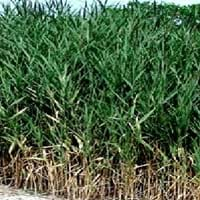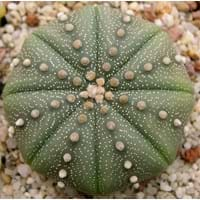Life Span
Perennial
Perennial
Type
Grass
Ornamental Plant
Origin
Southern Europe
Not Available
Types
Arundo, Carrizo
Not Available
Habitat
Saline Soils, Sandy areas
Desert, Semi desert
USDA Hardiness Zone
6-10
12-15
AHS Heat Zone
12 - 1
12-10
Sunset Zone
3a, 3b, 4, 5, 6, 7, 8, 9, 10, 11, 12, 13, 14, 15, 16, 17, 18, 19, 20, 21, 22, 23, 24
21, 22, 23, 24
Habit
Upright/Erect
Oval or Rounded
Flower Color
Not Available
Yellow
Flower Color Modifier
Bicolor
Not Available
Fruit Color
Not Available
Non Fruiting Plant
Leaf Color in Spring
Green, Gray Green
Not Available
Leaf Color in Summer
Light Green
Not Available
Leaf Color in Fall
Green, Gray Green
Not Available
Leaf Color in Winter
Green, Gray Green
Not Available
Leaf Shape
Linear
Elliptic
Plant Season
Spring, Summer, Fall, Winter
Not Available
Sunlight
Full Sun
Not Available
Growth Rate
Very Fast
Very Slow
Type of Soil
Clay, Loam, Sand
Not Available
The pH of Soil
Acidic, Neutral, Alkaline
Not Available
Soil Drainage
Average
Not Available
Bloom Time
Late Summer, Early Fall, Fall, Late Fall
Spring
Repeat Bloomer
No
Not Available
Tolerances
Wet Site, Drought, Salt
Not Available
Where to Plant?
Ground
Container, Ground, Pot
How to Plant?
From Rhizomes, Stem Planting
Cuttings, Stem Cutting
Plant Maintenance
Medium
Medium
Watering Requirements
Requires a lot of watering
Needs very little water
In Summer
Lots of watering
Lots of watering
In Spring
Moderate
Moderate
In Winter
Average Water
Average Water
Soil pH
Acidic, Neutral, Alkaline
Not Available
Soil Type
Clay, Loam, Sand
Not Available
Soil Drainage Capacity
Average
Not Available
Sun Exposure
Full Sun
Not Available
Pruning
Do not prune during shooting season, Prune after harvesting, Remove damaged leaves, Remove dead branches, Remove dead leaves
Remove damaged leaves, Remove dead branches, Remove dead leaves
Fertilizers
All-Purpose Liquid Fertilizer, Fertilize in early spring
All-Purpose Liquid Fertilizer
Pests and Diseases
Not Available
Mealy bugs
Plant Tolerance
Drought
Drought
Flowers
Showy
Not Available
Flower Petal Number
Single
Single
Fragrant Fruit
No
Not Available
Fragrant Bark/Stem
No
Not Available
Showy Foliage
Yes
Not Available
Showy Bark
No
Not Available
Foliage Texture
Bold
Bold
Foliage Sheen
Matte
Not Available
Invasive
Sometimes
Not Available
Self-Sowing
Yes
Not Available
Attracts
Bees, Birds, Hummingbirds
Hummingbirds
Allergy
allergic conjunctivitis, flushing of face, wheezing
Not Available
Aesthetic Uses
Beautification, Bonsai
Showy Purposes
Beauty Benefits
Making cosmetics, Skin cleanser
Not Available
Environmental Uses
Agroforestry, Air purification, Nesting sites for birds, No fertilizer, pesticides, or herbicides needed, Prevent Soil Erosion, Shadow Tree, soil stabilisation
Air purification
Medicinal Uses
Diaphoretic, Diuretic, Emmoiliant
No Medicinal Use
Part of Plant Used
Bark, Sap
Not Available
Other Uses
Basketary, Showy Purposes, Used in making musical instruments, Wood is used in construction
Not Available
Used As Indoor Plant
Sometimes
Yes
Used As Outdoor Plant
Yes
Yes
Garden Design
Container, Cutflower, Dried Flower/Everlasting, Feature Plant, Mixed Border, Screening / Wind Break, Tropical, Water Gardens
Bedding Plant
Botanical Name
ARUNDO donax
Astrophytum myriostigma
Common Name
Giant Reed
Bishop's Cap Cactus, Bishop's Hat, Bishop's Miter Cactus ,Star Cactus
In Hindi
नरकट
Star Cactus
In German
Pfahlrohr
Star Cactus
In French
Arundo donax
Star Cactus
In Spanish
Arundo donax
Star Cactus
In Greek
Arundo donax
Star Cactus
In Portuguese
Cana-do-reino
Star Cactus
In Polish
Lasecznica trzcinowata
Star Cactus
In Latin
Arundo donax
Star Cactus
Phylum
Angiosperms
Magnoliophyta
Class
Liliopsida
Magnoliopsida
Order
Cyperales
Caryophyllales
Clade
Commelinids
Angiosperms, Core eudicots, Eudicots
Tribe
Not Available
Cacteae
Subfamily
Not Available
Cactoideae
Number of Species
Not Available
Properties of Giant Reed and Bishop's Cap Cactus
Wondering what are the properties of Giant Reed and Bishop's Cap Cactus? We provide you with everything About Giant Reed and Bishop's Cap Cactus. Giant Reed has thorns and Bishop's Cap Cactus doesn't have thorns. Also Giant Reed does not have fragrant flowers. Giant Reed has allergic reactions like allergic conjunctivitis, flushing of face and wheezing and Bishop's Cap Cactus has allergic reactions like allergic conjunctivitis, flushing of face and wheezing. Compare all the properties and characteristics of these two plants. Find out which of these plant can be used as indoor plant. If you are interested to decorate your house and garden, find out aesthetic uses, compare them and select the plant which will beautify your surrounding. Along with beautification, try comparing medicinal and edible uses of Giant Reed and Bishop's Cap Cactus and you can choose the plant having best and most benefits.
Season and Care of Giant Reed and Bishop's Cap Cactus
Season and care of Giant Reed and Bishop's Cap Cactus is important to know. While considering everything about Giant Reed and Bishop's Cap Cactus Care, growing season is an essential factor. Giant Reed season is Spring, Summer, Fall and Winter and Bishop's Cap Cactus season is Spring, Summer, Fall and Winter. The type of soil for Giant Reed is Clay, Loam, Sand and for Bishop's Cap Cactus is Not Available while the PH of soil for Giant Reed is Acidic, Neutral, Alkaline and for Bishop's Cap Cactus is Not Available.
Giant Reed and Bishop's Cap Cactus Physical Information
Giant Reed and Bishop's Cap Cactus physical information is very important for comparison. Giant Reed height is 18.00 cm and width 150.00 cm whereas Bishop's Cap Cactus height is 25.00 cm and width 20.30 cm. The color specification of Giant Reed and Bishop's Cap Cactus are as follows:
Giant Reed flower color: Not Available
Giant Reed leaf color: Green and Gray Green
Bishop's Cap Cactus flower color: Yellow
- Bishop's Cap Cactus leaf color: Not Available
Care of Giant Reed and Bishop's Cap Cactus
Care of Giant Reed and Bishop's Cap Cactus include pruning, fertilizers, watering etc. Giant Reed pruning is done Do not prune during shooting season, Prune after harvesting, Remove damaged leaves, Remove dead branches and Remove dead leaves and Bishop's Cap Cactus pruning is done Remove damaged leaves, Remove dead branches and Remove dead leaves. In summer Giant Reed needs Lots of watering and in winter, it needs Average Water. Whereas, in summer Bishop's Cap Cactus needs Lots of watering and in winter, it needs Average Water.





